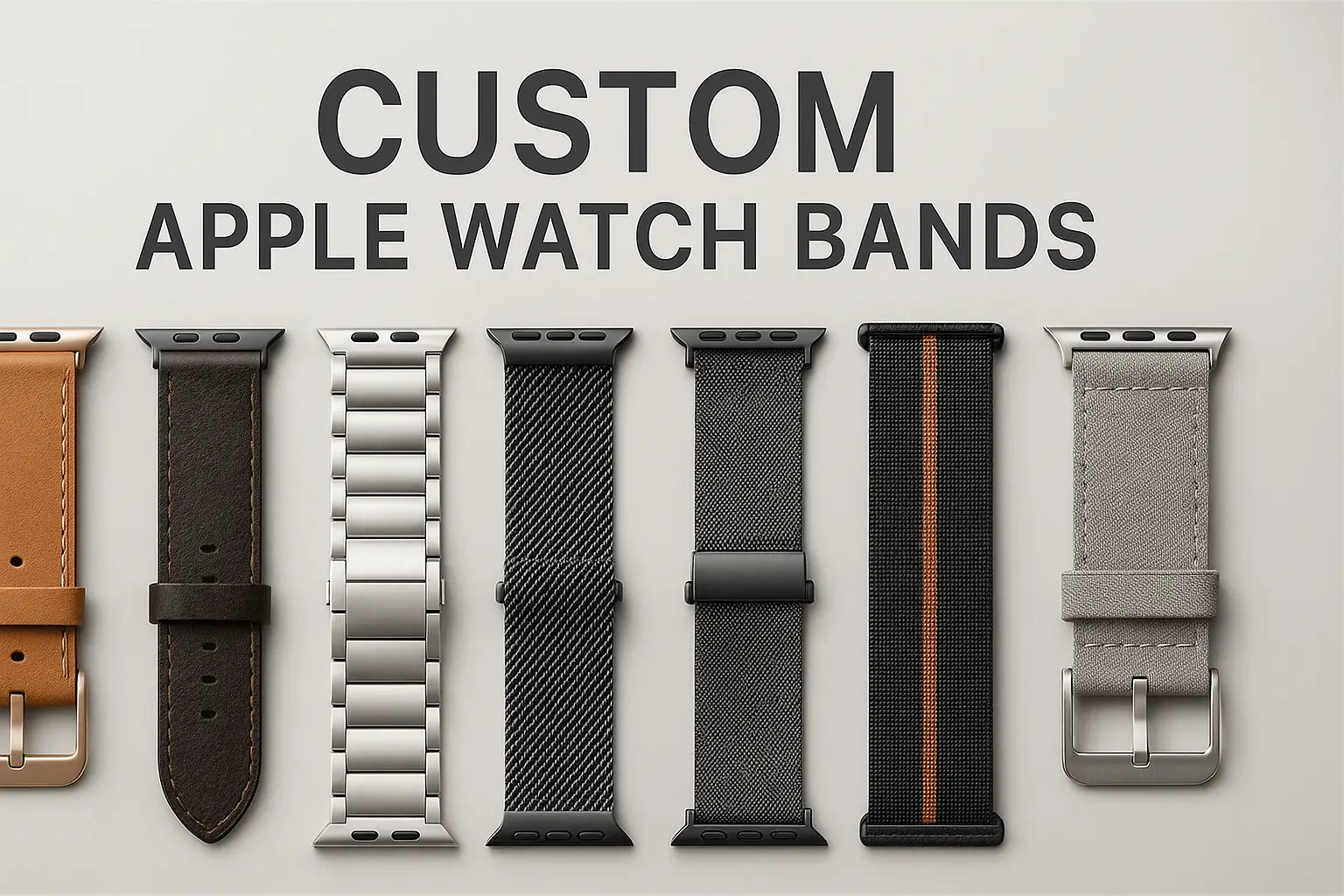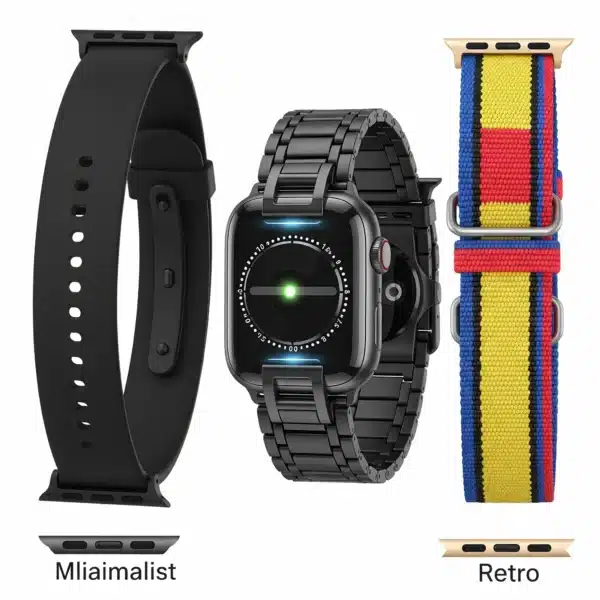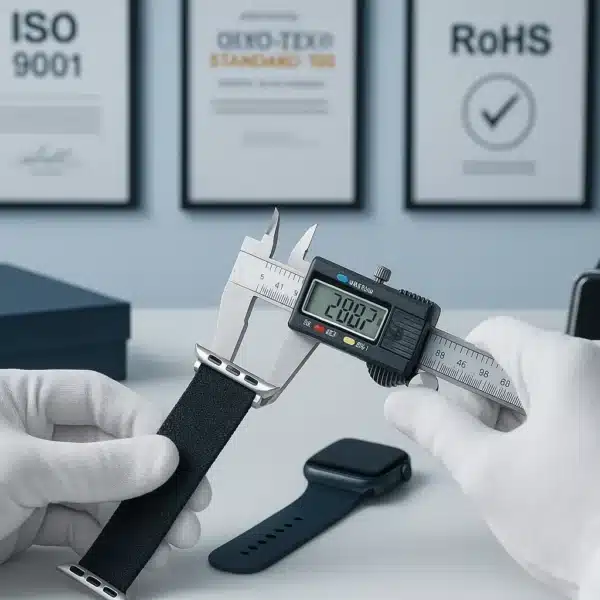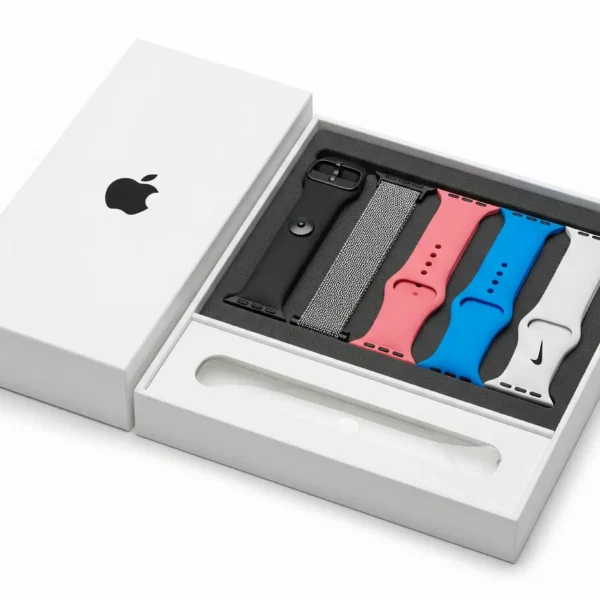
1️⃣ Introduction: Why Material Selection Matters in the Apple Watch Band Industry
The global Apple Watch band market is rapidly growing, driven by consumer demand for personalization, comfort, and high-quality products. For B2B buyers—Shopify store owners, Amazon sellers, and retailers alike—choosing the right materials is more than a design decision: it’s a strategic move that impacts durability, brand positioning, and long-term profitability.
At Yusslab, we specialize in helping businesses source Apple Watch bands that blend form, function, and innovation. This guide explores how material selection drives product success, brand differentiation, and customer satisfaction.
By the end of this guide, you’ll understand the key factors influencing material choices, the pros and cons of each option, and how Yusslab’s approach to material selection supports B2B partners in building competitive, market-ready products.
2️⃣ Key Considerations for Material Selection in Apple Watch Bands
Functionality First
When choosing materials, functionality comes first. Buyers must consider:
- Durability: Can the material withstand daily wear, sweat, and stretching without degrading? (See Pros and Cons of Silicone Apple Watch Bands)
- Comfort & Breathability: Materials like silicone and woven nylon provide comfort for all-day wear.
- Skin Safety: Hypoallergenic materials reduce irritation and meet safety standards like RoHS and REACH.
- Water & Sweat Resistance: Essential for sports or outdoor use.
Design Aesthetics & Trends
Material choices directly influence the look and feel of Apple Watch bands:
- Surface Finish: Glossy metals, matte silicones, textured fabrics—each creates a distinct visual identity.
- Malleability: Some materials (e.g., silicone, metals) allow for complex designs; others limit creative possibilities.
- Trend Alignment: Innovative materials like fluoroelastomer and ceramic reflect market trends and premium positioning.
For a deep dive into available materials, check out What Materials Are Available for Apple Watch Bands?.
Cost-Benefit Analysis
Balancing cost and quality is key:
- Material Costs: Prices vary significantly across silicone, leather, metal, and woven materials.
- Processing Complexity: Some materials, like leather, require more labor and expertise.
- Lifecycle Costs: Durable materials may reduce warranty claims and enhance customer satisfaction.
Sustainability & Compliance
With eco-conscious consumers on the rise, sustainability matters:
- Eco-Friendly Options: Recycled silicone, plant-based leathers, and sustainable fabrics are gaining traction.
- Production Impact: Energy use, waste management, and emissions all factor into material choices.
- Regulatory Compliance: Meeting global standards is essential for market access.
For a closer look at how material choice affects order requirements, see Does Material Affect MOQ?.
3️⃣ Yusslab’s Material Selection Practices
Popular Materials in Our Collection
At Yusslab, we offer a range of materials tailored for different buyer needs:
- Silicone: Flexible, water-resistant, available in vibrant colors—ideal for sports and lifestyle bands.
- Leather (Genuine & PU): Premium aesthetics for luxury markets, though sensitive to water and wear. See Why Choose Leather for Apple Watch Bands?.
- Metal (Stainless Steel, Titanium): Durable, scratch-resistant, perfect for premium segments.
- Nylon & Woven Fabrics: Lightweight, breathable, and versatile for casual and outdoor use.
- Innovative Materials: Exploring fluoroelastomers and ceramics for high-end custom designs.
Yusslab’s Material Selection Strategy
Our approach balances:
- Target Market Alignment: Matching materials to audience needs (e.g., silicone for active users, leather for executive style).
- Design Flexibility: Selecting materials that support advanced techniques like UV printing and laser engraving.
- Sustainability Goals: Prioritizing eco-friendly options to support green branding.
- Supplier Partnerships: Working with trusted material suppliers ensures consistency and quality.
Innovation in Action
We’ve pioneered unique solutions like:
- Cross-Industry Materials: Adapting outdoor gear fabrics for durable Apple Watch bands.
- Custom Finishes: Combining special textures, multi-layer printing, and hybrid materials for standout designs.
4️⃣ How Material Selection Impacts Product Value
Quality Perception
High-quality materials enhance durability, comfort, and overall customer satisfaction. The feel of a premium leather band or the resilience of a well-crafted silicone strap reinforces product value.
Brand Positioning
Using exclusive materials helps brands stand out. Eco-friendly choices communicate responsibility, while innovative materials like ceramics signal cutting-edge design.
Competitive Advantage
Material choices can create clear points of differentiation—offering small-batch, custom designs (see Can You Order Custom Apple Watch Bands in Small Batches?) helps B2B clients respond quickly to trends and niche markets.
5️⃣ Conclusion & Outlook
Key Takeaways
Material selection is the backbone of Apple Watch band design. At Yusslab, we believe the right material elevates not only the product but also the brand itself.
Future Trends
- Sustainability: Demand for recycled and plant-based materials will grow.
- Smart Materials: Conductive fabrics and sensor-compatible materials will unlock new possibilities.
- Customization: Small-batch, niche-focused production (see Apple Watch Band Sampling and Lead Time Guide) will drive innovation.
Yusslab’s Next Steps
- Continue exploring advanced materials for performance and design.
- Strengthen supplier relationships for a resilient supply chain.
- Stay aligned with market trends and customer needs.
FAQ: Material Selection for Apple Watch Bands
Q1 What are the most popular materials for Apple Watch bands?
The most common materials include silicone, leather, stainless steel, titanium, and woven nylon. Each has unique pros and cons, which we explore in What Materials Are Available for Apple Watch Bands?.
Q2 How does material choice impact product durability?
High-quality materials like premium silicone and stainless steel enhance durability, while low-cost options may degrade faster under daily wear.
Q3 Can I request a mix of materials in one order?
Yes, Yusslab supports mixed-material orders—such as combining metal and leather bands in one shipment—depending on MOQ requirements.
Do sustainable materials affect the price or lead time?
Eco-friendly materials may have a slightly higher cost or longer lead time, but they add value to your brand and meet rising consumer expectations. Learn more in Does Material Affect MOQ?.
How do I choose the right material for my target market?
Consider customer preferences: active users prefer silicone, executives lean towards leather, while premium markets may favor metal or innovative materials.
📌 All You Need to Know About Custom Apple Watch Bands
- Apple Watch Band Packaging Custom Guide:
- Apple Watch Bands Logo Customization Guide
- Apple Watch Band Sampling and Lead Time Guide
- Apple Watch Band MOQ Guide
- Apple Watch Band Quality Inspection & Certification Guide
Ready to Build Your Brand with Custom Apple Watch Bands?
Yusslab empowers B2B buyers with premium materials, expert guidance, and flexible production solutions. Whether you’re sourcing for a boutique brand or scaling your e-commerce operation, we’re here to help you stand out. Contact us today for a free consultation—let’s make your project a success.
Wholesale Ultimate Guide to Custom Apple Watch Bands: From Design to Delivery
This guide is your one-stop resource for…
Apple Watch Band Design Trends & Popular StylesGuide: Leading Fashion
understanding design trends an…
Apple Watch Band Quality Inspection & Certification Guide: Building Trust and EEAT Leadership
In the Apple Watch band indust…
Apple Watch Band Packaging Custom Guide: Elevating Brand Value to the Next Level
📂 Table of Contents […]
How Long Does Sampling Take for Apple Watch Bands?
Adding your brand’s logo to Ap…




